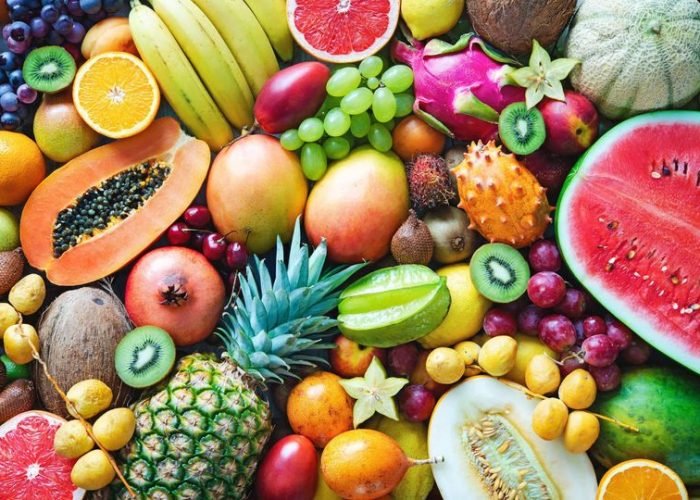Evolved
Diet & lifestyle
principles & practices


Aligning Diet & Lifestyle to achieve maximum Stamina, Strength, Focus & Longevity
Aligning with the first principle and practice of communitarian union, which is to adopt a diet of living nutrition and to maintain an active and intelligent lifestyle, communitarians are obligated to diligently ‘seek after knowledge’ of natural and authentic health practices that lead to maximum vital energy and longevity.
Communitarians are compelled by conscience as well as encouraged by the communal unions to acquire skills and knowledge to enable them to take responsibility for their physical and mental capacities. Additionally, communitarians are called to contribute to the advancement of effective prevention and treatment of disease and suffering that currently afflicts humankind and animals alike.


Returning to The Human Species-Specific Diet
Every animal has a diet specific to their species, and no other land or marine animal, bird, or insect, ‘fires’ their food – except humans. Within the animal kingdom, everything is eaten raw. So, what makes the human animal, different? Are we really meant to be poles apart, or are our diets generationally and culturally, ‘corrupted’?
Few of us ever ask the question: what is the natural diet for humans? Even though there is evidence everywhere that humans can eat a wide variety of foods to survive, doesn’t mean eating without discernment is ideal, or, without consequences.
The principles and practices of Living Nutrition defines living food as food that can be consumed in as close to its natural state as possible. In order to preserve maximum nutriments and enzymes, partaking of food that requires heating above temperatures greater than 115-118F or 46-47 degrees C is eliminated from the diet
Plant foods such as fruits, greens, nuts, seeds and sprouted grains along with seaweed in their original uncooked state, contain a wide range of vital life force nutrients. The more ‘living’ these natural raw foods are when eaten, the more enzymes, vitamins and minerals are available to absorbed into the body, enabling us to utilize those substances to generate energy and renew bone, cells and tissue. When these enzymes, vitamins, and minerals are available without restriction, we are able to live life to the fullest while contributing our best to our associates and the wider world.
Enzymes are the life-force of food. Cooking food kills or else suffocates the potency of food. In contrast, food that is still alive when eaten provides the body with the absolute maximum nutritional potential. Living foods are the natural fuel for the body’s organs, blood and especially the brain. The more we fuel our bodies with living vital fuel, the healthier we are and the better we feel.
With the encouragement and support of the communal unions, most communitarians make an easy transition to a diet and lifestyle of living nutrition, within a year. Beyond the initial period of essential detox those who adopt a diet of living foods, go onto reap the rewards of better mental and physical health, weight loss and management, as well as, strengthen their immune systems to resist colds, flus and both viral and bacterial infections.




Eat from the Living Trees
The practice of ‘eating from the Living Trees’ is the central principle of ‘Living Nutrition’ that aligns the communitarian with both the attainment of health and also ethical dietary choices that respect ‘the right to life’ of all living creatures. For these reasons, Fruits are the mainstay of the communitarian diet along with nuts, seeds and soft leafy greens and pure living water.
The only food on the planet that appeals to our senses, in its natural state, as it is – unprocessed, unfired, is Fruit. The fruit of living trees are the only foods that look, smell and taste good, as they are – without the need to add salt, sugar, spices or artificial flavouring, or heat.
Those who transition to, and maintain a Living Food diet, frequently testify to enhanced levels of calm, peace and happiness, along with mental and physical energy, high motivation, stable blood sugars and freedom from colds and flus. Many have healed previous long-standing ailments, such as: depression and anxiety, weight issues, constipation, asthma, acne, eczema, arthritis, hyper and hypo glycaemia, diabetes and high and low blood pressure, to name but a few of the diseases cured through a diet of living foods.
Within a year of adopting a diet of Living Nutrition, the majority of communitarians report that their whole bodies are cleaner. The breath is sweet and body-odour becomes a non-issue to the point where most abandon the use of chemical deodorants and perfumes. When the body is no longer a ‘putrefying steaming bog’, but rather cleansed continually by fruit, it is no longer necessary to cover-up ‘personal stink’. Many also notice that their eliminations have taken on a fruity odour that is not at all offensive.
Of all the foods on the earth suitable for human consumption, fruit is able to be digested with the greatest of ease, requiring far less energy to be expended in the process of digestion than any other foodstuff. Fruit from living trees, vines and bushes contain abundant carbohydrate for energy along with naturally assimilable proportions of protein, fat, glucose, phytonutrients, vitamins, minerals, antioxidants, and fibre, devoid of the toxicity of processed foods.
Fruit is the original and ultimate ‘Fast Food’. It is easier to pack a bag of fruit on your way out the door than prepare ‘traditional’ meals, or stand at the fish and chip shop or the pizza bar waiting for your order to be processed.




The Goodness of Leafy Greens
As a rule, in their raw state, greens take far more energy to be processed by the gut than fruit. However, the mineral and fibre content are higher in organic freshly harvested greens than supplied by the majority of store-brought fruit, and therefore make a valuable addition to a diet of living foods.
Unfortunately, many types of commercially grown fruit are picked too early and end up on market shelves well before they are ripe, which results in poor mineral content. The additional issue that greens remedy is that many fruit trees are grown on very poor-quality soils that contain few minerals. Hence the tree has little to uptake and pass-on through its fruit, nuts and berries.
Soft leafy greens such as lettuce and micro-greens also slow down the rate of fructose absorption, which is important for those who have impaired pancreatic function.
It is important when choosing greens to be able to distinguish between low and high oxalate types. Low-oxalate varieties such as romaine lettuce, mustard greens and watercress are the easiest to digest and can be safely eaten raw. In contrast, high-oxalate greens such as spinach, beet greens, Swiss Chard and endive should never be eaten raw. Likewise, it is important to realise that high-oxalate greens are not reliable sources of calcium due to the fact that absorption is relatively low. Reducing the oxalate content in these types of leafy greens, requires them to be boiled, which disqualifies them from inclusion in the living foods diet.
The chlorophyll–the pigment that makes greens – green, make them an excellent detoxifier. Chlorophyll-rich foods such as spirulina, chlorella, parsley, and alfalfa bind to heavy metals and toxins in the blood and carry these toxic contaminants out of the body via well-bulked stools. Chlorophyll also helps cleanse the liver to support the body’s natural ability to detox while supporting immune function to keep toxins from collecting in the body in the first place.
Raw leafy greens are one of the best foods to eat to support the body’s natural ability to produce digestive enzymes which are critical for breaking down and absorbing the nutrients from food. When the body lacks access to these essential enzymes, we are likely to experience gastrointestinal issues such as bloating, constipation, reflux, and nutrient deficiencies that may set the conditions for all types of cancers, including bowel cancer.
A large body of scientific evidence suggests that long-term oxidative stress contributes to the development of a wide-range of chronic conditions, such as cancer, diabetes, and heart disease. Numerous studies provide evidence that greens such as moringa leaf can heal oxidative damage by restoring the balance of free radicals and antioxidants within the body.
Most communitarians add a large salad to either their midday or evening meal made up of a whole head of lettuce accompanied by a cup or two of micro-greens. Others simply wrap their fruits in soft leafy greens and eat them at every meal and snack. Greens also provide a great deal of bulk to keep us fuller for longer when there may be long gaps between mealtimes due to work, travel, or study commitments.



Vitamin & Mineral-Rich Nutrition from the Sea
There is no deficiency in the sea. Consequently, seaweeds and sea vegetables offer the broadest range of minerals of any food, containing virtually all the minerals found in the ocean, in the correct balance that is easily assimilated by the human body.
Iodine is one such mineral found in seaweeds and sea vegetables that is an essential component of the thyroid hormone thyroxine which is crucial in supporting the proper function of human metabolism. Communitarians who maintain a diet of living nutrition obtain their iodine needs from edible seaweeds, particularly brown seaweeds which contain higher amounts of iodine than other varieties such as green seaweeds.
Seaweeds such as Dulse, Nori and Wakame also contribute substantial amounts of energizing iron, immunity-boosting Vitamin C, Vitamin B1, B2 & B6, Vitamin A, Manganese and Copper as well as protein, pantothenic acid, potassium, zinc, niacin, phosphorus, folate and fibre to the diet.
There are many easy and attractive ways to include nutrition from the sea in our diets. It can be as simple as sprinkling Dulse flakes over a salad, encasing a salad in Nori Wraps, or using wakame in vegetable dishes to season and enhance the flavor while adding a balance of vitamins and minerals, protein and fibre to sustain health and energy.


Living Water
Living Water
Living Water is water that falls from the sky free of dangerous chemicals and harmful bacteria. Living water is unprocessed water sourced directly from nature, with all of its natural benefits intact. The purest form of water, is rainwater. When stored in glass that can be exposed to the sun for a full day of solar radiation, rainwater is transformed into the ultimate hydration for the human adult body which is made up of 60 percent water.
Journal of Biological Chemistry contributor H.H. Mitchell asserts that the human brain and heart are composed of 73% water, while the lungs are made up of around 83% water. The skin is composed of 64% water, muscles and kidneys – 79%. Even our bones are watery comprising 31% water.
Each day humans must consume a certain amount of water to survive. Of course, this varies according to age and gender, and also the climate where we live. Generally adult males need to consume around 3 litres (3.2 quarts) per day while an adult female should drink about 2.2 litres (2.3 quarts) per day. However all of the water a person requires need not come from drinking liquids, as some of this water is contained in the food we eat, particularly fruits.
Water serves a number of essential functions including:
- A vital nutrient to the life of every cell, acts first as a building material
- Regulates our internal body temperature through perspiration
- The carbohydrates and proteins that our bodies use as food are metabolized and transported by water in the bloodstream
- Assists in flushing waste mainly through urination
- Acts as a shock absorber for brain, spinal cord, and fetus
- Produces saliva
- Lubricates the joints
Rainwater is formed via the evaporation of the oceans and inland bodies of water. Moisture condenses, collects sulphur and when the load of condensed moisture becomes too heavy to be suspended in the clouds, it rains. It is within this process that rainwater collects essential nutrients needed for the formation of plant amino acids. Rainwater has a high nitrogen composition, a key component in chlorophyll, the essential ingredient for the process of photosynthesis. Similarly, when lightning strikes during a rainstorm, it causes the nitrogen in the atmosphere to combine with the hydrogen, which produces a critical fertilizer for plants that is carried by rain into the earth’s soil.









